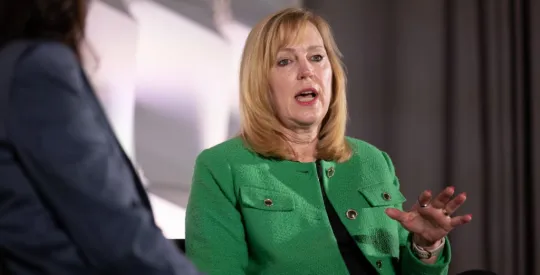As older people increasingly express their preference to age in place in their own homes, family members will oftentimes be required to provide some semblance of care for their loved ones in later life. Caregiving challenges can be compounded if there’s only one child in the family, but a reverse mortgage could offer a solution, according to a column published by Reuters.
Michael Hausknost, a financial planner living in Long Beach, California, is spearheading care for his 90-year-old mother as an only child. One of the pieces of advice for only children who will care for their parents is to start early.
“I started planning for [this] 20 years ago,” Hausknost told the outlet. “I knew that there was longevity in my family, that my mom wouldn’t go anywhere soon, and had no means herself, so I saved accordingly.”
That saving activity is likely a big help, because Hausknost’s mother incurs roughly $6,000 a month for room and board alone, with extra costs like medication adding to that figure regularly, the column explained.
But “raiding” savings to pay for later life care can seriously challenge the financial stability of both parent and child — and a child should be judicious about how much they contribute to the fees, according to Joy Loverde, an eldercare consultant and author.
“If you start dipping into your own pockets, you might be disqualifying them from state and federal programs by stepping up and paying for everything,” she said.
This is where alternative financial instruments can come into play.
“There are a lot of options including selling a house and downsizing, taking out a home equity loan or line of credit and entering into a reverse mortgage,” the column stated.
Industry educators have long aimed to position a reverse mortgage as a financial planning tool for retirement. Experts including Wade Pfau and Jamie Hopkins have long aimed to communicate the potential for a reverse mortgage to add cash flow in retirement, with Pfau often describing a reverse mortgage as an investment tool.
“It’s all about the sequence-of-returns risk in retirement planning […] Spending from the home equity helps you preserve more investments, so there is going to be a bigger legacy at the end,” Pfau told Investment News last month. “The beneficiaries can get more. They can pay off the loan and still have a net windfall.”
Recent data from WSFS Mortgage indicated that perceptions about reverse mortgages could be warming, with 79% of nationwide respondents agreeing that a reverse mortgage “can allow you to stay in your home longer,” and 76% of respondents agreeing that the loan can “provide needed cash flow” in retirement.



